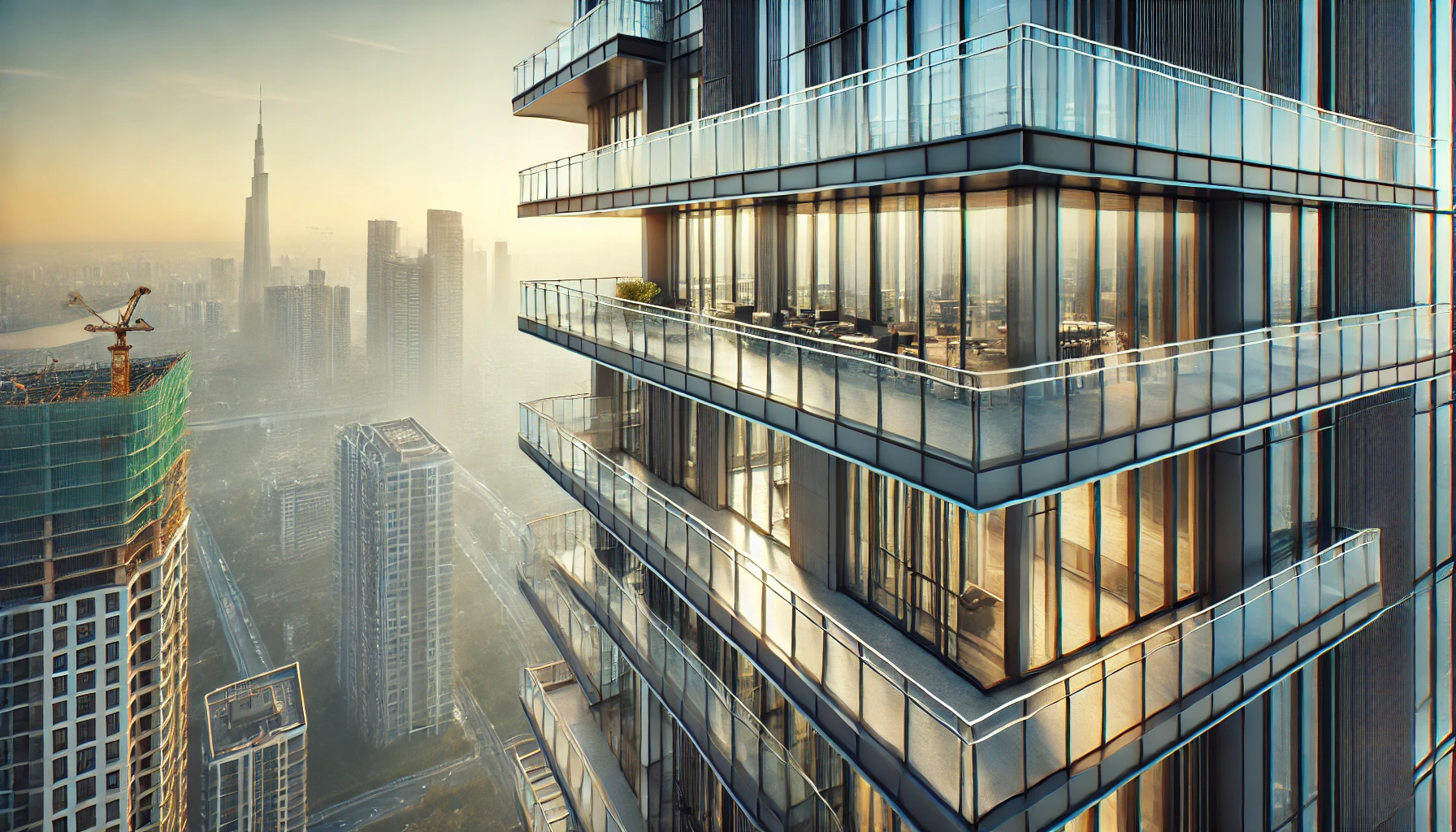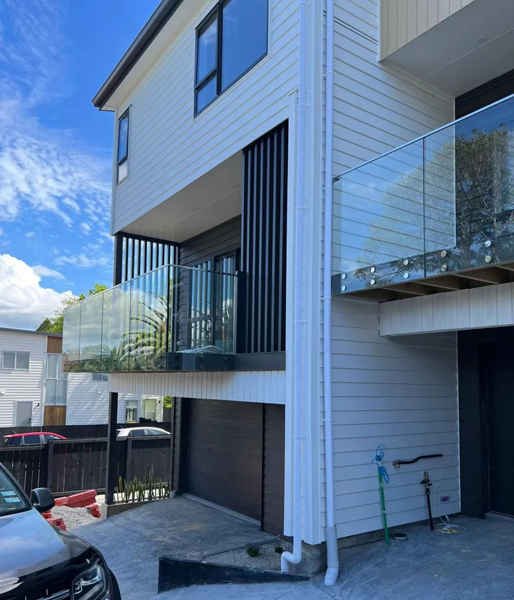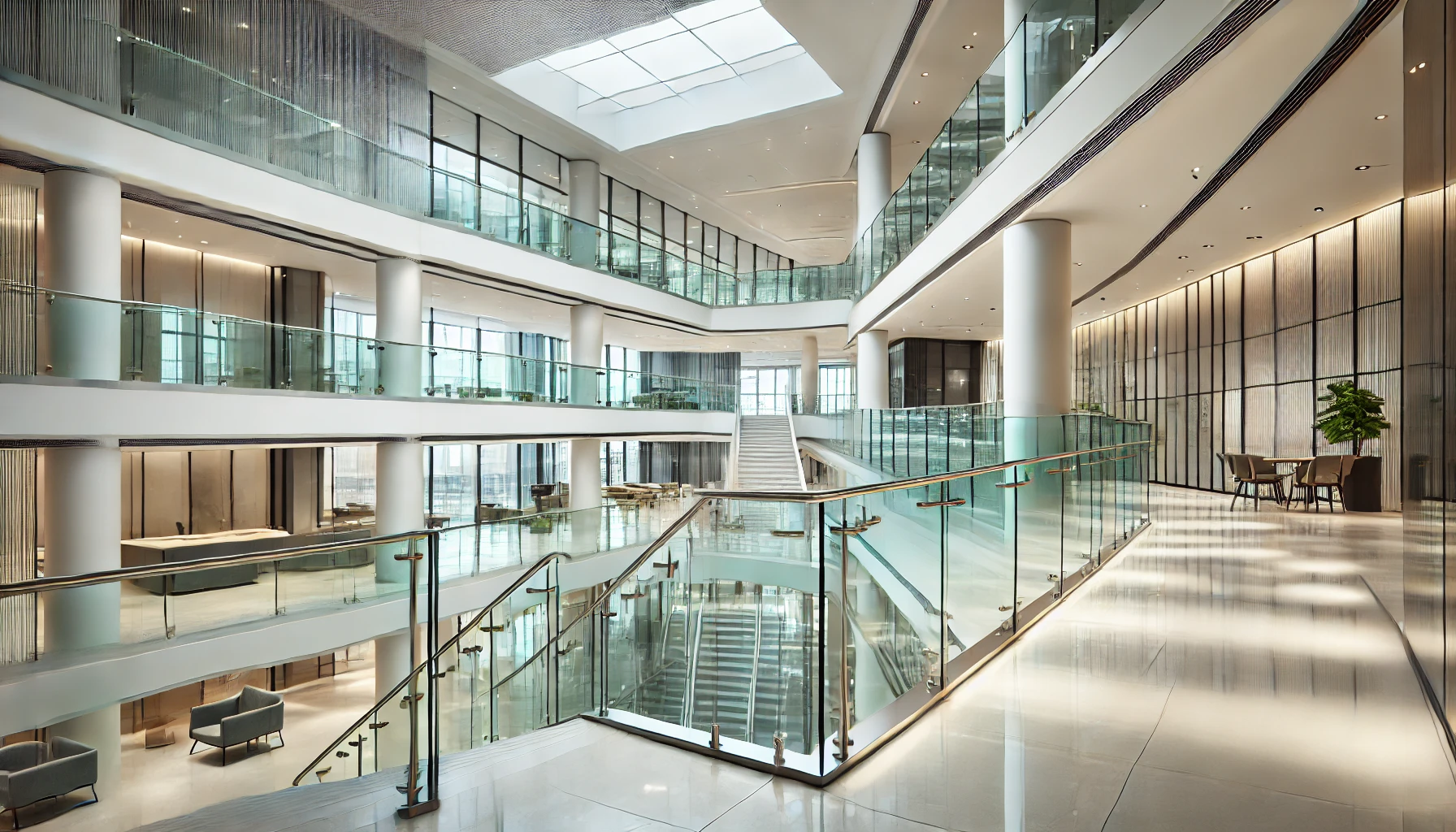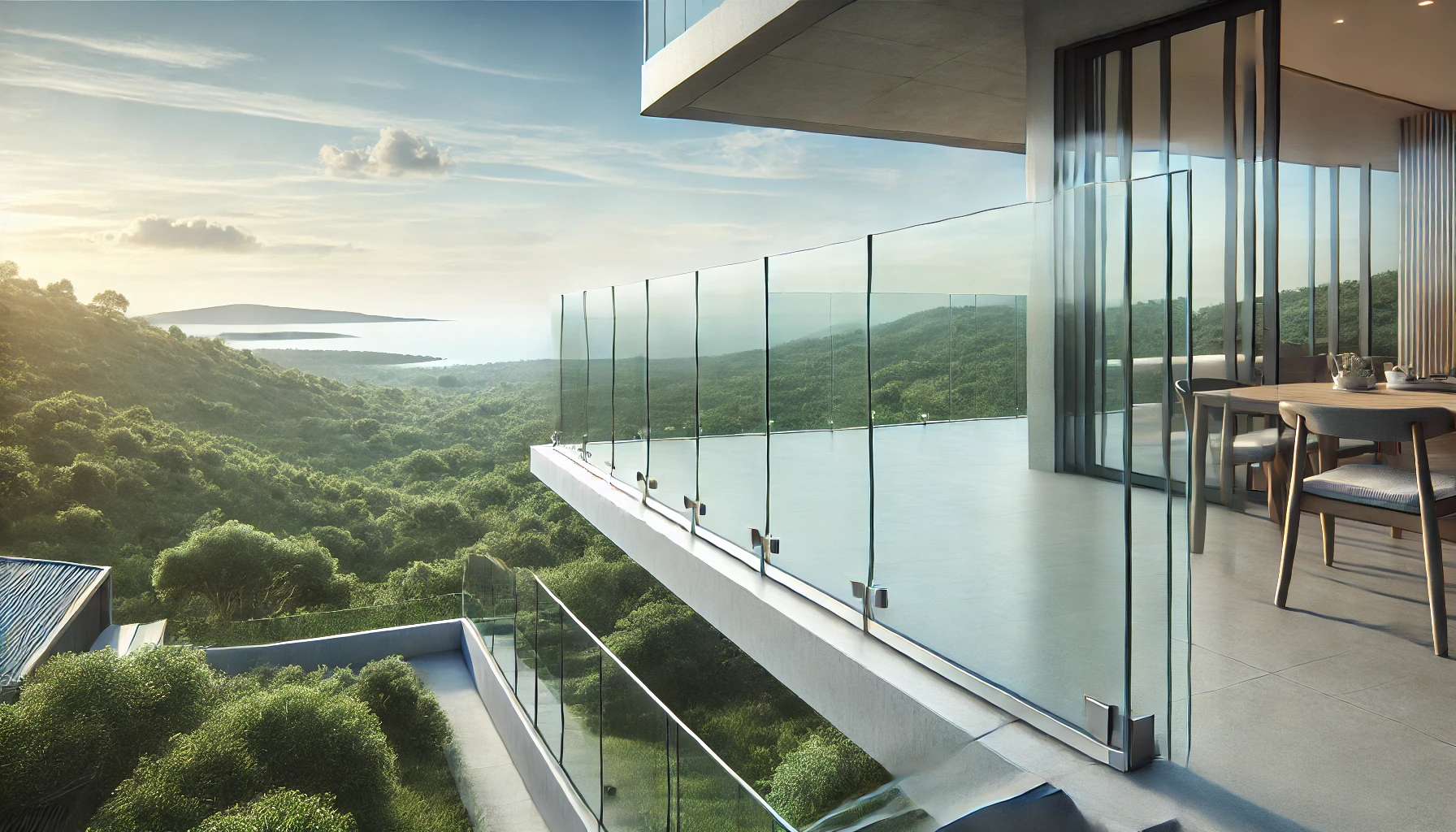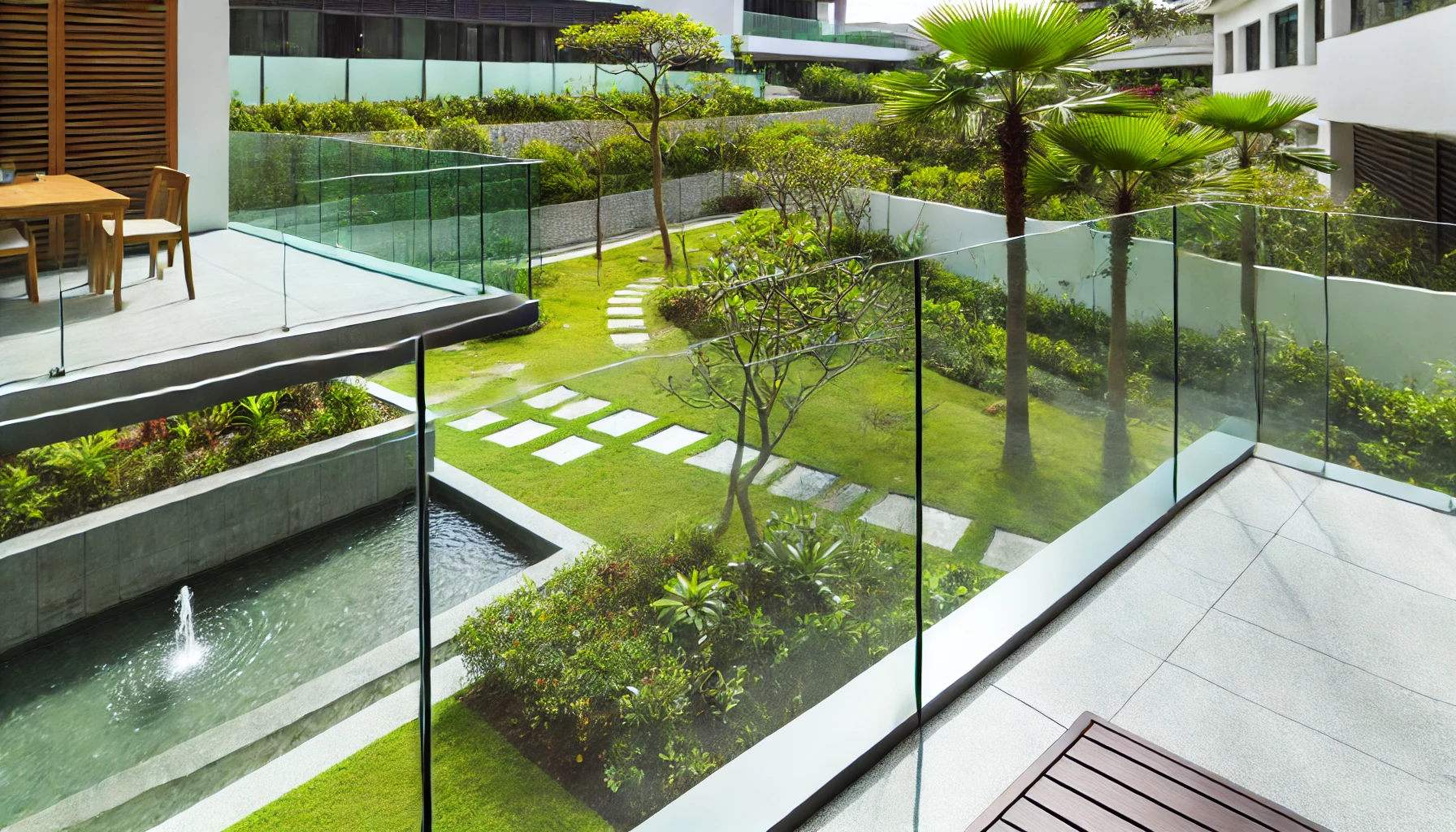Introduction
Glass railings have become increasingly popular in high-rise buildings, offering sleek, modern aesthetics and unobstructed views. However, installing glass railings in tall structures comes with unique challenges that must be addressed to ensure both safety and functionality. This article explores the application of glass railings in high-rise buildings, the benefits they offer, and the challenges that must be overcome to implement them successfully.
1. Benefits of Glass Railings in High-Rise Buildings
Glass railings offer several advantages in high-rise buildings, making them a favored choice among architects and designers.
- Aesthetic Appeal: Glass railings enhance the architectural beauty of high-rise buildings by providing a clean, contemporary look. Their transparency allows for unobstructed views, which is particularly valuable in skyscrapers where residents and occupants can enjoy panoramic vistas of the surrounding cityscape or natural landscapes.
- Maximizing Natural Light: Glass railings contribute to the overall brightness of a space by allowing natural light to pass through, reducing the need for artificial lighting during the day. This is especially beneficial in high-rise apartments, offices, and communal areas where light is often at a premium.
- Safety and Security: Modern glass railings are designed with safety in mind, using tempered or laminated glass that can withstand significant impact without breaking. In the event of breakage, these types of glass shatter into small, blunt pieces or remain adhered to an interlayer, reducing the risk of injury.
- Wind and Noise Reduction: Glass railings can serve as effective windbreaks on balconies or terraces in high-rise buildings. Additionally, laminated glass has sound-dampening properties, which can help reduce the intrusion of external noise—a significant benefit in urban environments.
2. Challenges of Using Glass Railings in High-Rise Buildings
Despite their many benefits, glass railings in high-rise buildings present several challenges that must be carefully managed.
- Wind Load Considerations: High-rise buildings are exposed to much stronger wind forces than lower structures. These wind loads can exert considerable pressure on glass railings, which must be designed to withstand these forces without compromising safety. Engineers must calculate wind loads accurately and choose glass thickness and mounting systems that can endure these pressures over time.
- Thermal Expansion and Contraction: Glass expands and contracts with temperature changes, which can be more pronounced in high-rise buildings due to their exposure to varying weather conditions. This can lead to stress on the glass panels and their mounting systems, potentially causing cracks or loosening of the hardware. To address this, flexible mounting systems and the use of laminated glass, which is more resistant to thermal stress, are recommended.
- Installation Complexity: Installing glass railings in high-rise buildings is more complex than in lower structures. The logistics of transporting large glass panels to upper floors, particularly in tight urban environments, can be challenging. Additionally, the installation must be precise to ensure that the railings are level and securely anchored, which can be difficult at great heights.
- Maintenance and Cleaning: Maintaining the cleanliness and integrity of glass railings in high-rise buildings is another challenge. Accessing the exterior surfaces of glass railings on upper floors for cleaning or repair can be difficult and costly, often requiring specialized equipment and safety protocols. Regular maintenance is essential to ensure that the railings remain both safe and visually appealing.
3. Design and Engineering Solutions
To successfully incorporate glass railings into high-rise buildings, several design and engineering solutions can be implemented.
- Use of Laminated Glass: Laminated glass is often preferred in high-rise applications due to its safety features and durability. The interlayer in laminated glass not only holds the glass together if it breaks but also provides additional strength and flexibility, making it better suited to withstand the dynamic forces encountered at height.
- Advanced Mounting Systems: The choice of mounting system is critical in high-rise buildings. Systems that allow for some degree of movement, such as point-fixed glass fittings or flexible base shoes, can help accommodate the natural expansion and contraction of the glass without compromising its integrity. These systems also need to be robust enough to handle the significant wind loads present at higher elevations.
- Designing for Wind Loads: Engineers must carefully calculate the wind loads that the glass railings will be subjected to and design the system accordingly. This may involve using thicker glass panels, more frequent support points, or even integrating additional structural elements to disperse the wind forces effectively.
- Maintenance Planning: When designing glass railings for high-rise buildings, it is important to consider how they will be maintained over time. This might include incorporating access points for cleaning equipment, using self-cleaning glass coatings that reduce the need for manual cleaning, or designing the building in a way that makes the railings more accessible for maintenance work.
4. Case Studies: Glass Railings in High-Rise Buildings
Examining real-world examples can provide valuable insights into the successful application of glass railings in high-rise buildings.
- Case Study 1: One World Trade Center, New York
One World Trade Center in New York is an iconic example of a high-rise building utilizing glass railings. The observation decks feature glass railings that allow visitors to enjoy unobstructed views of the city. The design had to account for high wind loads, and engineers chose thick, laminated glass with a robust anchoring system to ensure safety and durability. - Case Study 2: Marina Bay Sands, Singapore
Marina Bay Sands in Singapore is another notable high-rise building that incorporates glass railings, particularly around its famous infinity pool on the rooftop. The railings here are designed to withstand the intense wind loads typical at such heights, using reinforced glass and flexible mounting systems to prevent damage and ensure guest safety. - Case Study 3: The Shard, London
The Shard in London, one of the tallest buildings in Europe, uses glass extensively, including in its railings. The design had to address the challenges of wind loads, thermal expansion, and maintenance at great heights. The building features laminated glass railings with advanced mounting systems that provide both safety and aesthetic appeal, contributing to the building’s iconic look.
5. Future Trends and Innovations
As technology advances, new materials and design approaches are emerging that could further improve the application of glass railings in high-rise buildings.
- Smart Glass: Smart glass, which can change its transparency or opacity based on environmental conditions, is gaining traction. In high-rise buildings, this technology could be used in railings to reduce glare, improve energy efficiency, and enhance privacy without sacrificing views.
- Advanced Coatings and Treatments: New coatings for glass are being developed that can enhance its durability, reduce maintenance needs, and improve its ability to withstand environmental factors. For example, hydrophobic coatings can make glass more resistant to water and dirt, keeping railings cleaner for longer periods.
- Innovative Structural Designs: As architects and engineers push the boundaries of what’s possible with high-rise design, we can expect to see even more innovative uses of glass railings. This could include integrating railings with other building systems, such as lighting or energy generation, to create multi-functional elements that contribute to both the aesthetics and the performance of the building.
Conclusion
Glass railings in high-rise buildings offer significant aesthetic and functional benefits, but they also come with unique challenges that require careful consideration. By understanding the specific demands of high-rise environments and employing advanced design and engineering solutions, it is possible to create glass railing systems that are both beautiful and safe. As technology continues to evolve, the future of glass railings in high-rise architecture looks promising, with new innovations likely to make these systems even more efficient, durable, and versatile.

